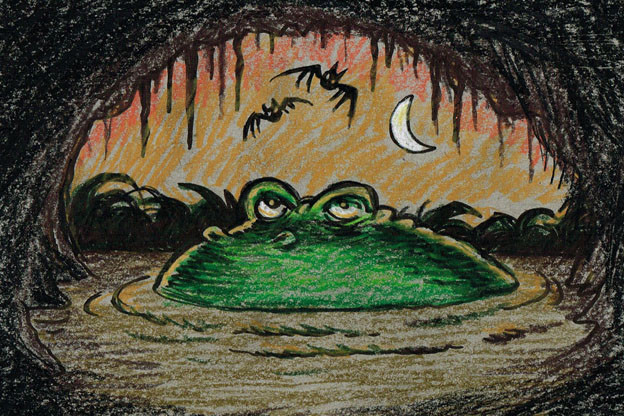

“It’s a giant money suckhole”
That’s a comment I have heard muttered multiple times in various warrens at the Capitol to describe the Iron Range Resources and Rehabilitation Board (the “IRRRB”). We are now better able measure the dimensions of the suckhole, because of a report prepared by Minnesota’s legislative auditor and published on Friday.
For an earlier story that I wrote about the IRRRB, please see Governance in the Dismal Swamp. Suckhole, swamp? What’s the difference?
And here’s the Strib’s wrapup of the report, complete with some pithy quotes from Range pols: Scathing audit questions Iron Range agency’s accountability.
– o O o –
The legislative auditor’s report is damning of the IRRRB accounting practices:
IRRRB cannot evaluate its loan program because it does not
maintain an accurate database of loans. (Page xi of the report summary.)
According to the report, the IRRRB’s loan database was developed in 1987, which Twins fans will tell you is a long time ago. The IRRRB is also exempt, by its enabling statute, from IT supervision by Minnesota Management and Budget. Minn. Stat. § 298.22. Neat, huh?
The grant programs of the IRRRB don’t fare any better in monitoring compliance with the conditions of the grant.
I contacted the IRRRB many months ago to ask if it maintained accounting records for its activities, including the loan portfolio (other than its biennial puff piece to the legislature; more on that later); I was told that of course it did, and was referred to MMB. Upon contacting MMB, I was told, Gee, Steve, we don’t have anywhere near that kind of detail.
Apparently, the IRRRB doesn’t either. According to the report, the IRRRB has only the dimmest notion of whether loans are performing, and by that I mean not only are payments being made, but whether other loan covenants are being observed: the promised creation of jobs, or the protection of collateral, for example.
This is appalling. I mean, I thought I was probably just missing something. Someone is missing something, all right, but it I don’t think it’s me.
For fiscal 2015, the IRRRB budget was $41 million, but it spent $85.5 million, because in addition to its budget, it receives money annually from several statutory funds which in turn receive money from the taconite production tax. The IRRRB prepares a glossy report to the legislature about the $41 million, but not the rest. Somewhat ironically, Giant’s Ridge, the suckhole within the suckhole, as described in the auditor’s report, is usually prominently featured in the IRRRB’s report to the legislature.
Let’s assume that at least some of the IRRRB’s loans are paid back. What happens to that money? How much is it? Is is part of the difference between the $85.5 million and $41 million? Or is it just more money?
– o O o –
Appendix A to the legislative auditor’s report also lays out the case that the agency is unconstitutional, as it presently exists. I wrote about a year ago that I thought the agency violated the separation of powers clause and the prohibition of legislators holding an office in the executive branch. The auditor’s report contained a statement on the purpose of the separation of powers clause from the debate leading up to the constitution’s adoption, by Territorial Supreme Court Justice Bradley Meeker:
The man who makes the law must not expound the law, and the man who executes the law must not be the law maker. These are maxims of government, which we have been taught from our boyhood, and I am opposed to their being broken down by this body.
That’s retrograde gender politics, but it’s a pretty good statement of the raison d’être of the separation of powers clause.
– o O o –
In the linked Strib article, former legislator Tom Rukavina said it was a “bad report.” You can be sure than even now the Rangers like the Ruk are circling the wagons. Legislative reform of the IRRRB will be difficult. But the case against the IRRRB constitutionally is a slam dunk, and ought to be brought to move things along.
– o O o –
Update: There are a couple of quotes in the linked Strib article on which I cannot resist comment. First, here’s IRRRB Commish Mark Phillips:
“We haven’t looked at ourselves since 1985, so this was a timely thing to do,” said Phillips, who became commissioner last year. “The longer things aren’t looked at, things get looser, sloppier, however you want to put it … things slide, loan files slide.”
As for a constitutional challenge to the board’s structure, Phillips said he is not concerned. But the matter is up to the board and the Legislature, he said.
They’re not a terribly introspective bunch, apparently. It was 1995 though, when the big power grab by the IRRRB occurred, vesting decision-making authority in the board.
And Mr. Phillips is whistling past the graveyard when he says he isn’t worried about the constitutional challenge. And contrary to his statement, it isn’t up to the board and the legislature; in the last analysis the Minnesota Supreme Court gets to say what’s constitutional. It’s that pesky separation of powers again.
And who can resist the quote machine Tom Rukavina:
Tom Rukavina, who served on the IRRRB board for 26 years and is now a St. Louis County commissioner, dismissed the audit as another “bad report” from the Office of the Legislative Auditor.
“Any time they’re bored and don’t have anything to do they attack the IRRRB,” Rukavina said. “It’s kind of like death and taxes, it comes around often enough.” [Last in 1985, ed.]
“Nobody wants to talk about the good things it does.”
You see the problem, Ruk, is — as the legislative auditor points out — nobody, including the IRRRB itself, can tell whether it is doing any good.
Thanks for your feedback. If we like what you have to say, it may appear in a future post of reader reactions.

